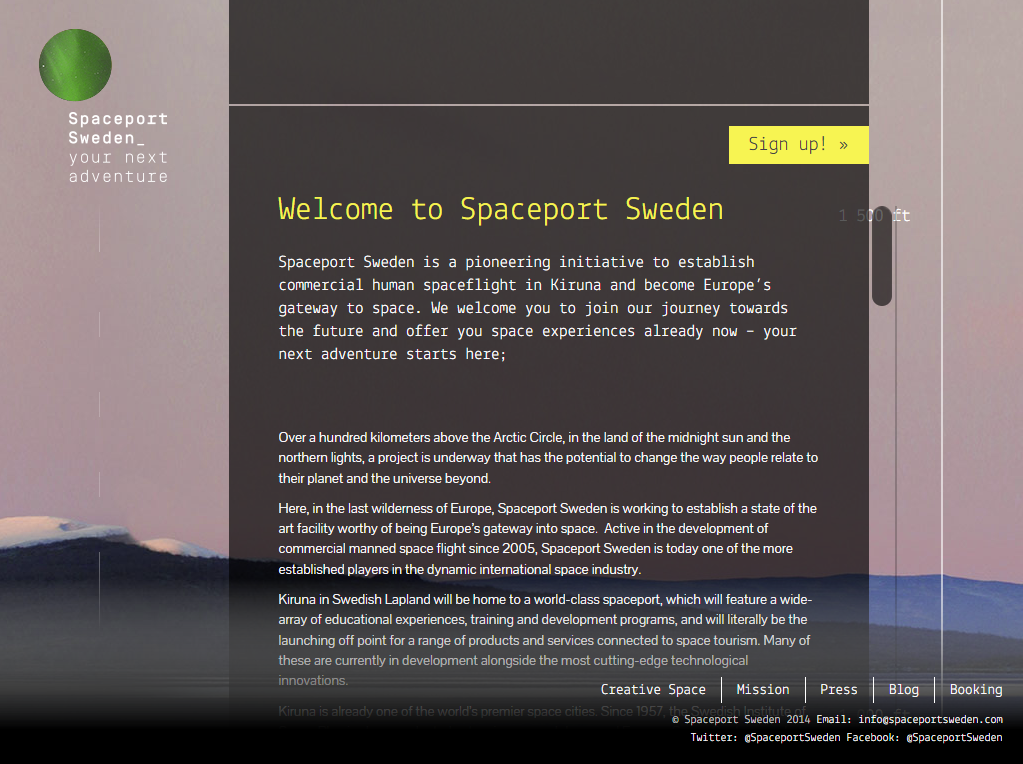Physical Address
304 North Cardinal St.
Dorchester Center, MA 02124
Physical Address
304 North Cardinal St.
Dorchester Center, MA 02124

In the mid-2000s, an ambitious dream emerged to transform Kiruna into Europe’s first commercial spaceport. The project, named Spaceport Sweden, aimed to be a key player in the growing space tourism industry. Inspired by spaceports in the United States and driven by a combination of innovation, technology, and the allure of the Arctic wilderness, the goal was to send private individuals on suborbital flights through partnerships with international actors.
The project was launched in 2005 by Karin Nilsdotter, a passionate entrepreneur with a strong background in aviation and innovation. With support from Kiruna Municipality, the Swedish Space Corporation (SSC), and other local entities, the plan was to leverage Esrange Space Center and the region’s long history of space research to build a new industry around commercial space operations.
The vision included training programs for future space tourists, parabolic flights simulating weightlessness, and potential collaborations with Virgin Galactic to use their space vehicles for suborbital flights. Spaceport Sweden also promoted experiences such as Northern Lights Flights and technical visits to capitalize on the region’s unique environmental conditions (Spaceport Sweden).

Despite its ambitious vision and initial enthusiasm, Spaceport Sweden never managed to take off. Several factors contributed to its downfall:
Although Spaceport Sweden never reached its goals, the project left a lasting impact. It contributed to increased interest in space exploration in Sweden and put Kiruna on the map as a potential future hub for space activities. Today, Esrange Space Center continues to play a crucial role in European space research, and space tourism may still become a reality in the long term.
The space tourism industry has made significant strides in recent years, with companies like SpaceX, Blue Origin, and Virgin Galactic leading the way. If the market continues to evolve and technology becomes more affordable, there is potential for a future iteration of Spaceport Sweden.
For now, however, the project serves as an example of how grand visions sometimes collide with real-world challenges, but also how Sweden can still be part of the future space industry. The story of Spaceport Sweden proves that the dream of reaching the stars is still very much alive.
Sources:
The original website was, at the date of this creation, only found through Wayback Archive.